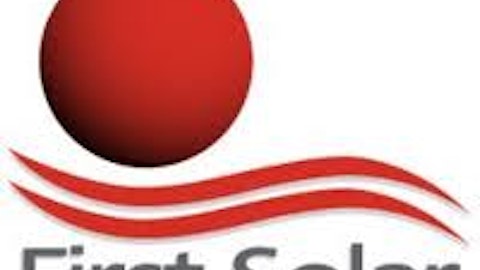In two previous articles, I’ve examined how financial institutions and big data companies like Apple and Google are working with solar power. This, the third article in the series, examines how the U.S. military, the largest consumer or oil and energy in the world, is incorporating solar power into their various operations.
Following orders
According to 10 USC § 2911, the Department of Defense is required to produce or procure at least 25% of the total energy required to run their facilities by renewable energy sources by 2025 and every year thereafter. On their way towards meeting that target, the Department of Defense is expected to add 58% of solar power capacity between now and 2017.
The military believes that it is critical to establish energy security and assert energy independence, thereby insuring that natural disasters, enemy actions, and a variety of other factors don’t compromise their ability to succeed in performing critical missions in combat zones.
In adopting solar solutions, the military forges private partnerships to develop and finance the partnerships. According to the Solar Energy Industries Association, or SEIA, two of the three types of structures are Power Purchase Agreements and Energy Savings Performance Contract. Below are several case studies that demonstrate these partnerships.
Anchors aweigh
The SEIA recognizes the value of PPAs for the military as such, “The military signs a contract to purchase the energy produced by the solar installation at a price that is below local utility rates, which can save the DOD and taxpayers millions of dollars over the life of the system.”
There are many examples of these types of partnerships that have already been developed. One example is China Lake Naval Air Weapons Station. Developed and constructed by SunPower Corporation (NASDAQ:SPWR), the 14-megawatt project was completed in October 2012 and is the Navy’s largest project to date. The solar farm is expected to yield savings of $13 million over the life of the 20-year lease agreement.
Into the wild blue yonder
The biggest energy consumer in the military, the Air Force, plans to produce 1 gigawatt of renewable energy by 2016. Additionally, solar power will account for 70% of all new renewable capacity by 2017.

Another example of a PPA is demonstrated by the Air Force, who has worked with SolarCity Corp (NASDAQ:SCTY) to provide Hickam Air Force Base in Honolulu, Hawaii with 3.4 MW of power for the 2,000 home community. Currently, plans are being reviewed to potentially augment that level and bring the power production up to 5.5 MW.
SolarCity Corp (NASDAQ:SCTY) also has projects in development at Los Angeles Air Force Base, and Peterson and Schriever Air Force Bases in Colorado.
Army Strong
In addition to implementing solar solutions into tactical operations, such as with the Sniper Detection System, “Firefly,” the Army is making use of solar power in the U.S. Implemented by Siemens AG (ADR) (NYSE:SI), the White Sands Missile Range project is an example of a Energy Savings Performance Contract that was awarded and managed by the U.S. Army Engineering and Support Center.
Over the life of the 25-year project, Siemens AG (ADR) (NYSE:SI) will operate and maintain the solar farm and then sell all of the generated energy back to the White Sands Missile Range. The 4.1 MW project is expected to meet 10% of the missile range’s electricity needs, and it will save the Army approximately $900,000 yearly.
How powerful are these allies?
SunPower Corporation (NASDAQ:SPWR)’s strengths can be seen in their vertical integration. Beginning with their superior solar panel design, through their inverters, and monitoring, SunPower Corporation (NASDAQ:SPWR) offers clients a one-stop solar solution. I find their booked projects GAAP revenue increase from $862 million in 2012 to an estimated $1.2 billion – $1.3 billion for 2013 promising, as well as their improvement in margins from 24.1% in 2012 to 29% to 34% for 2013. As the military shoots for the 25% by 2025, I see SunPower Corporation (NASDAQ:SPWR) as profiting handsomely.





